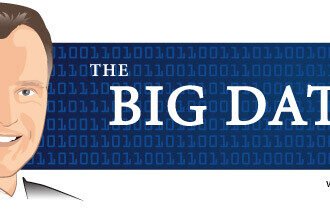In my previous posts, I’ve talked about the first three components of your Great Digital Strategy – things you would expect to be there, like systems and process used to automate Internal Operations, connect with your Customers, and provide innovative Products & Services. These may start as separate initiatives, but smart organizations create more value by integrating the data, to develop a fuller picture of your markets.
Clearly, Data is the fourth component of your Great Digital Strategy – it is the connective tissue that pulls these systems and processes together. But it’s a bit simplistic to say these aggregated bytes (generated by operations, customers, and products) are important; it’s really how you manage, integrate, and mine information from the data that makes it rise to this level.
When building your organization’s strategic data competency, you can take learnings and best practices from the other components – Master Data Management and Transaction Discipline from Internal Operations, Data Governance and handling Unstructured Data from Customer systems, and tools for handling High Volume, High Speed, “Dirty” Data, from your Products & Services. This is all very important – it’s also but mechanical, technical, and (to some extent) automatable.
So where is the magic? What makes this component an especially difficult – and valuable – component of your Great Digital Strategy?
Here’s a hint: don’t leave data management solely in the hands of your tech teams in IT, Finance, and Marketing – the big payoffs will come when you involve Human Resources.
The Real Challenge is People
What? Yep, you heard me – the real differentiating capabilities with managing data and leveraging information will come from the right mix of skills on your teams.
Think about what it takes to get value out of your data. I’ve written about the Data Value Chain before – a series of tasks (and supporting broad range of skills) required to go from Data to Information (and on to Value) …
- Insight: At the beginning; that spark of imagination that figures out what can we measure that might lead to value.
- Architect: Given a broad set of data types, how should we structure things to give us the views that we need?
- Generate: Now it’s time to gather the detail, going to the best source to pull it all in to one place …
- Store: … which requires a different set of skills, to manage the volume and take advantage of new technology (cloud, big data, etc.)
- Process: Next, our data scientists work the data, scrubbing and crunching, taking advantage of more new technology (AI, machine learning, etc.) to enable more insights.
- Analyze: Back to our analysts, who can work with the aggregated data, see the patterns, and drill to the truth – answering questions (and finding new questions to ask!).
- Present: Last but not least (and, at times, an overlooked step in the process) – how do we visualize the results, and draw the right picture so the rest of us can draw the right conclusions?
Each step in the process is key – and each requires a different set of skills. And yes, we all know one or two folks that can do a fairly good job at the majority of these tasks – but that is not a sustainable approach. These folks are unicorns – which might allow a start-up to get those first few rounds of funding, but for any sustaining business, relying on a single brilliant individual is problematic. Simply put, it doesn’t scale – and all business should aspire to scale their offerings and grow to meet the demand.
Individuals will not cut it here – the successful data management and analytics organization requires a team. And it is this human element – building a team with the right mix of skills, engagement, and focus – that makes it a critical strategic component.







